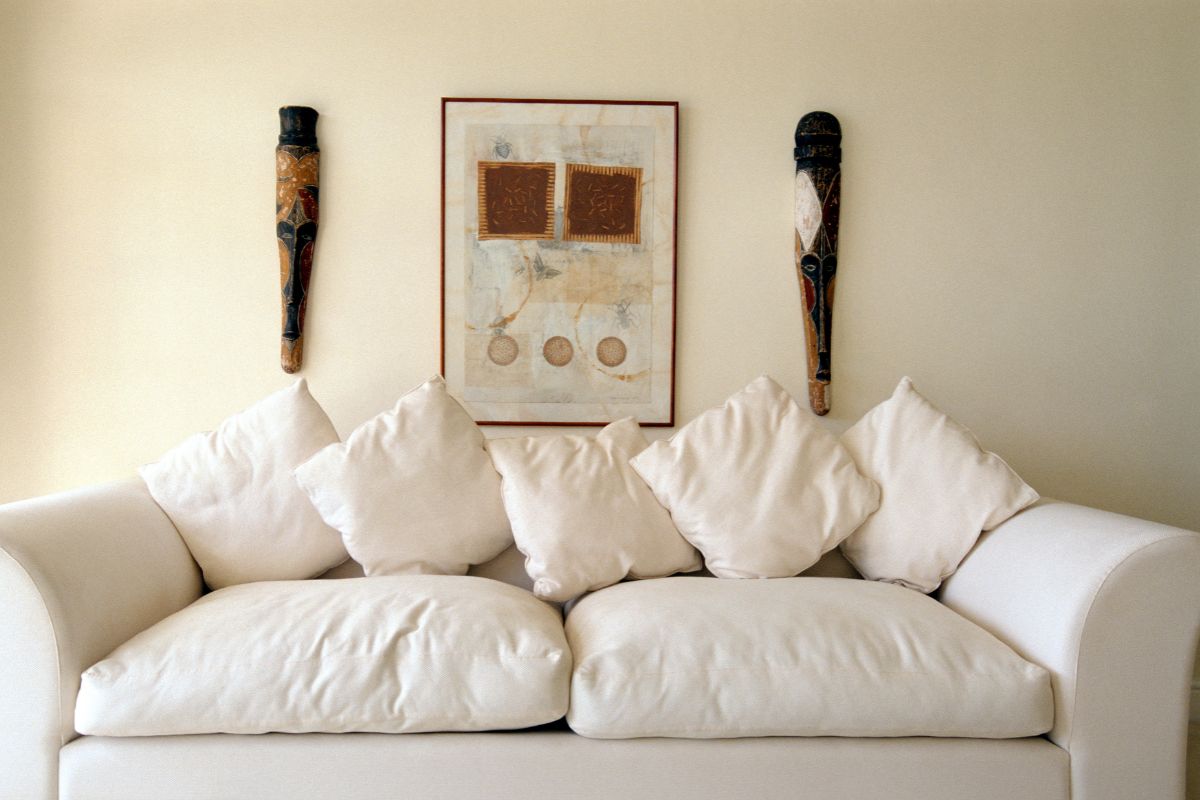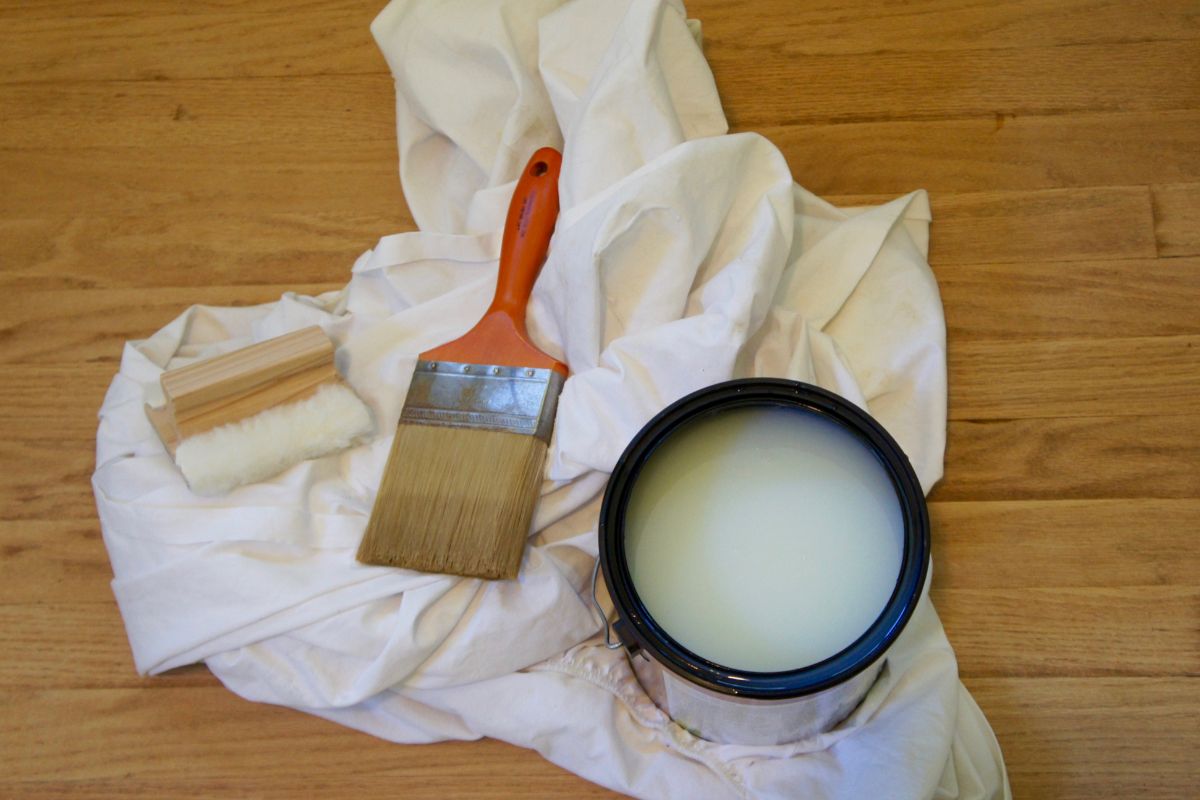Polyurethane furniture can withstand a lot of damage but that doesn’t mean that it doesn’t end up with some scratches.

If your polyurethane pieces look a little run down, then it’s a good idea to paint them and give them a new lease of life.
In this article, we take a closer look at whether you can paint polyurethane surfaces and how to make your polyurethane furniture look like new.
Can You Paint Over Polyurethane Surfaces?
Yes, it’s easy to paint over polyurethane. Alternatively, you can also varnish your polyurethane surface.
However, it’s important that you prepare the surface properly to ensure that the paint sticks to the polyurethane.
How To Paint Over Polyurethane?
Here are all the important steps to help you paint your polyurethane furniture.
Prepare Your Polyurethane Treated Surface
There are a few different ways that you can prepare your furniture surface for a new coat of varnish or paint.
Sanding
If you love your home DIY, then you know that sanding any surface before you apply paint or varnish is essential. The same applies to polyurethane surfaces.
You don’t need to strip off the entire, old polyurethane surface but you just need to roughen the top with some grit sandpaper.
This will help the paint stick to the surface better and your new coat of paint won’t peel off so quickly.
When you are done sanding your surfaces, just make sure that you remove all the dust with a vacuum cleaner and a cloth before you start painting.
Deglosser
If you aren’t keen on sanding, then deglosser is a fantastic alternative.
Deglosser is also the best option when you have a lot of round curves on your piece of polyurethane furniture.
Deglosser is essentially a chemical that works like fine grade sandpaper. It removes all the old polyurethane paint coat and allows the new paint to stick.
Bear in mind that most deglosser is a strong chemical which means you will need to wear gloves, old clothes and proper skin and eye protection.
Before you apply the deglosser, make sure to test it on a small area that’s not open visible.
Depending on your deglosser’s instructions, you usually just need to apply the solution with a clean cloth.
Wipe it all over the polyurethane surfaces of your project and let it dry fully. Once the surfaces are dry, you can start painting.
Bonding Primer
Another alternative to sanding is just applying some bonding primer.
The advantage of working with primer is that it will ensure your new paint will stick and you will also need to paint fewer coats to achieve full cover.
There are a few different types of primer that you can apply to your polyurethane surface.
A shellac-based primer is very easy to maintain. You don’t need much mineral spirit to clean it up and it prevents any tannin bleed.
But we found that bonding primer works best for painting polyurethane surfaces. You can use it to make almost anything stick to the surface, including a new coat of paint.
If you want a professional finish, then you can sand your surfaces quickly after you primed everything.
This will remove the visible paint strokes making the surface look smooth and even.
Choose Your Polyurethane Paint

When it comes to painting polyurethane furniture, then you can use any type of paint.
It’s a good idea to pick high-quality paint to ensure that the colors look vibrant and your surfaces are protected.
Latex paint or any water-based paint dries quickly and it doesn’t create strong odors. However, these types of paints aren’t very durable.
This means that you should use them only on surfaces for low traffic areas.
In comparison, oil based paints are much more durable but they take a while to dry and you need to ventilate the room properly (or work outside) as they have strong fumes.
We recommend using enamel paint for your polyurethane project as it’s durable, quick drying and the odor isn’t very strong.
Clean The Surfaces
Before you start painting, just use a cloth or rag and wipe down all the surfaces that you want to paint.
You can also use mineral spirit to remove all the dust and dirt. For any areas that are particularly greasy, just apply some dish soap to remove the oil.
Make sure that all paint areas are fully dry before the next step.
Apply Some Primer
Depending on how you prepared your polyurethane surfaces, it’s a good idea to apply some primer onto your surfaces.
You will need to choose the right primer based on your type of paint. For oil-based paint, choose oil-based primer, for water-based paint just use water-based primer.
Once you primed all your surfaces, allow everything to dry thorough and then give it a light sand to remove any of the visible paint strikes.
Wipe away the dust and you are ready to paint!
Paint Your Polyurethane Surfaces
After all your preparations, your polyurethane surfaces are now ready to be painted. Put the first coat of paint on with long and even strikes.
For a good finish, try to not brush over any areas that have been painted already.
You will need to apply a few coats of your polyurethane paint, although this depends on your paint, so make sure to check the instructions on the label.
Before you apply a second coat, you need to let the paint dry for a few hours. Once you apply all the paint coast, your polyurethane areas need to dry for at least 24 hours.
For a super smooth finish, you can also apply a final coat of clear polyurethane. This will also give your piece of furniture a glossy look.
Final Thoughts
You can easily paint over polyurethane treated surfaces. Just ensure that you remove the old paint and apply a primer so the new paint can stick to the surface.
Depending on the size of your furniture or surfaces, the painting will not take too long.
- How To Drill Into Brick? - October 31, 2022
- How To Repair And Refinish Hardwood? - October 31, 2022
- Floetrol – What Is It? When To Use It: Complete Guide - October 31, 2022
